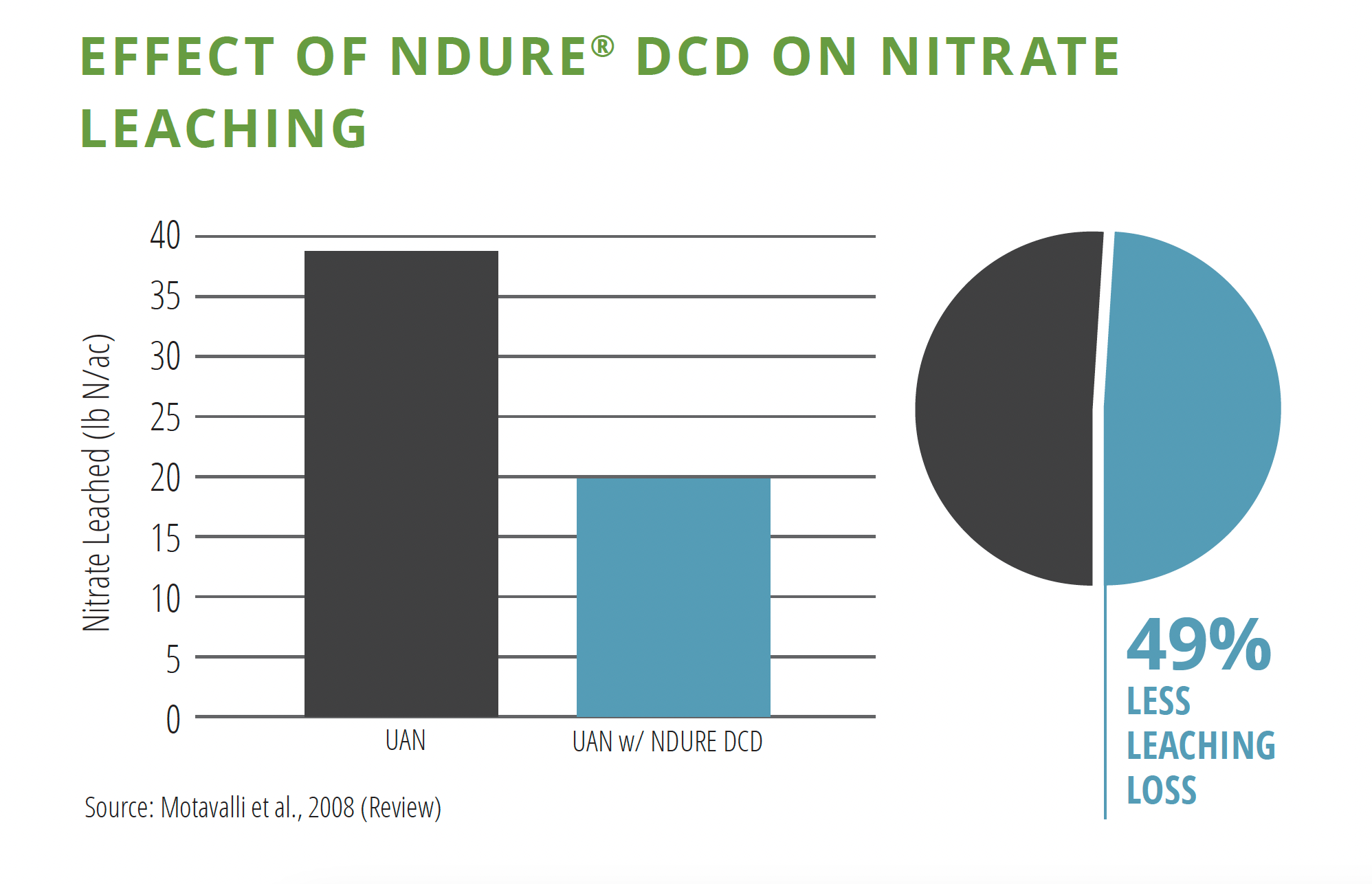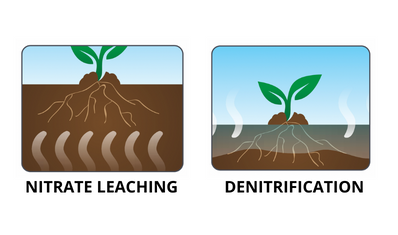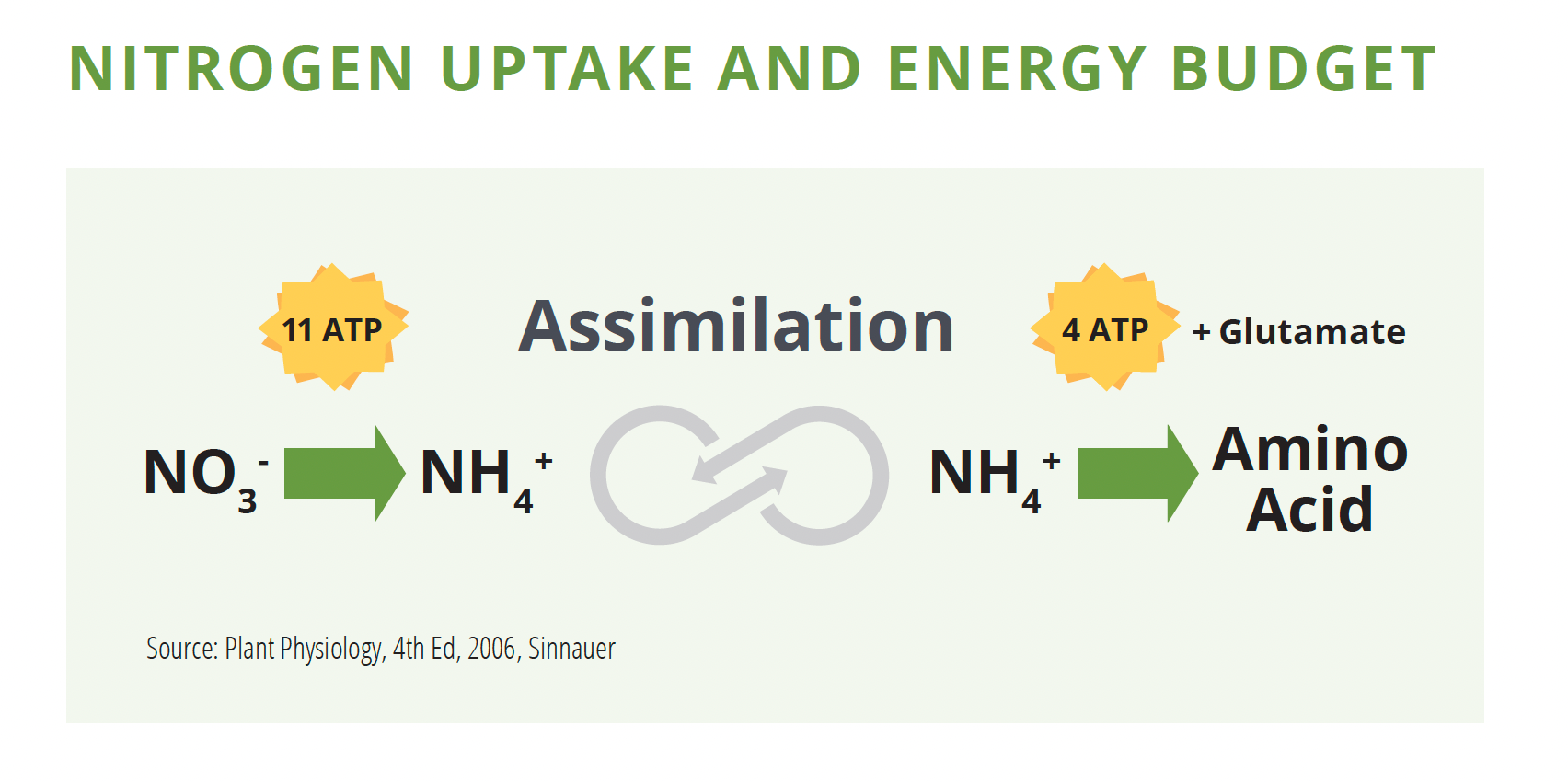The Nitrogen Cycle in soils is a very leaky system, meaning nitrogen can be lost to the environment by several mechanisms, and losses can be significant (up to 40+%). These losses reduce Nitrogen Uptake Efficiency (NUE) and return on fertilizer investment, which is of serious concern when fertilizer costs are high. Nitrogen losses can also result in reduced production. Two of these loss mechanisms include leaching and denitrification.
The Nitrogen Cycle in soils is a very leaky system, meaning nitrogen can be lost to the environment by several mechanisms, and losses can be significant (up to 40+%). These losses reduce Nitrogen Uptake Efficiency (NUE) and return on fertilizer investment, which is of serious concern when fertilizer costs are high. Nitrogen losses can also result in reduced production. Two of these loss mechanisms include leaching and denitrification.
Nitrate leaching is a form of nitrogen loss that happens when negatively charged nitrate is moved below the plant’s root zone by percolating water. Leaching tends to be more prevalent on sandy soils, but it can happen on all soil types.
Denitrification is a form of nitrogen loss that happens when negatively charged nitrate is moved below the plant’s root zone by percolating water. Leaching tends to be more prevalent on sandy soils, but it can happen on all soil types.
ATP (Adenosine Triphosphate) is an energy-rich molecule used as fuel to power chemical reactions in all living cells. Keeping nitrogen in the ammonium form longer enhances ammonium uptake saving the crop from expending energy that should otherwise be used to fuel growth and increase yields. Putting all three mechanisms together can lead to increases in crop production through:
- Improved nitrogen uptake efficiency
- Reduced nitrogen losses
- Improved energy budget
PROVEN RESULTS
In Figure 1, on average, NDURE 2.0-treated UAN resulted in a higher yield compared to untreated UAN, indicating the value of a urease inhibitor to protect the nitrogen from ammonia volatilization leading to optimized yield potential. NDURE DCD-treated UAN resulted in a higher yield compared to untreated UAN and NDURE 2.0-treated UAN. The study indicates a nitrification inhibitor to protect against nitrate leaching and denitrification was needed to gain the highest yield.
In Figure 2, across all three nitrogen rates, UAN treated with NDURE DCD stabilizer resulted in higher yields compared to untreated UAN.
In Figure 3, NDURE DCD-treated UAN resulted in a 13 bu/acre yield advantage compared to untreated UAN.
In Figure 4, in both broadcast and side-band applications, UAN treated with NDURE DCD stabilizer resulted in higher yields compared to untreated UAN.
Introducing TILL-IT® N-POWER™ and TILL-IT N-POWER S
Enjoy the convenience of NDURE DCD pre-mixed with UAN for ready-to-use simplicity.
TILL-IT N-POWER is a 27-0-0 liquid fertilizer derived from UAN containing DCD as a premix and 0.8% humic acid for the added benefit of enhanced nutrient uptake.
TILL-IT N-POWER S is a 26-0-0-3S derived from UAN and ammonium thiosulfate containing DCD as a pre-mix and 0.8% humic acid for the added benefit of enhanced nutrient uptake.
*Always read and follow label instructions. Products not available in all states.
Carl Bruice // National Nutrition Technical Manager









